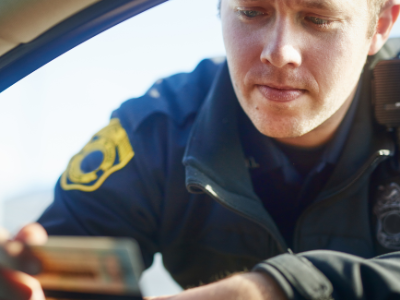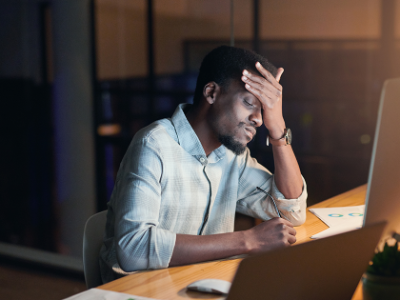One of the best parts of living in the digital age is the ability to share content quickly with friends and family. See a meme that would make your significant other laugh at work? Boop, boop, send. Harmless fun.
But since so much is online now, it’s also a lot easier to commit unintentional copyright infringement. Federal code, 17 U.S. C. §501 defines a copyright infringer as “anyone who violates any of the exclusive rights of the copyright owner.” So, what are the rights that make up copyright and how can you tiptoe around them?
The Exclusive Rights of Copyright Owners
First things first, a work is considered to be under the umbrella of copyright as soon as a work is created.
Contrary to popular belief, there is no inherent need to get your work registered with the U.S. copyright office, but a creator can register their work to guarantee extra protections. Registration also helps to promote the benefits of free-flowing information by giving the public the ability to find copyright information more easily.
Here are some of the rights that copyright owners are granted after creating their work i.e., writing it down:
- The right to reproduce the work in copies or phonorecords (recordings).
- The right to prepare derivative works based upon the original work (sequels, prequels, etc.)
- The right to distribute copies/phonorecords of the work to the public by sale or other transfer of ownership – rental, lease or lending. Library card, activate!
- The right to perform the work publicly if it’s a literary, musical dramatic or choreographic work; a pantomime; or a motion picture or other AV work.
- The right to display the work publicly, like via a movie screening.
- The right to perform the work publicly by digital audio transmission if the work is a sound record. Think Ariana Grande playing her album at a release party.
If you are not the copyright owner, remember to tread lightly when sharing others’ work. Your rights are different.
For Works That Aren’t Yours
If you’re not an owner, then what are you? You are known as a copyright user when you read books, watch movies, listen to music, etc. To avoid a legal no-no, you’ll want to pay attention to the Copyright Act’s exceptions and limitations.
One of these exceptions is known as Fair Use. Here’s what counts as fair use.
- Nonprofit education purposes usually bode better in court than when copyrighted works are used in a commercial setting.
- Nature of copyrighted work matters when it comes to fair use. Using a creative and/or imaginative work is less likely to be fair use when compared to the use of a news story or technical article. P.S. use of an unpublished work is also not very fair.
- Amount and substantiality of the portion used in relation to the whole copyrighted work also helps govern fair use. The smaller the portion that you’re using of the copyrighted work, the better. Usually. But if the small portion that you took is considered the “heart” of the work, then fair use is less likely to be deemed fair.
- Finally, effect of the use upon the potential market value of the copyrighted work is reviewed by courts. If it’s determined that the unlicensed use of the work displaced either current or future sales, then fair use would not protect it due to substantial harm to the owner.
For more nuanced information about copyright exclusions and limitations, refer to copyright.gov.
Another way that you can completely skirt around copyright is by using works that are in the public domain. This typically refers to formerly copyrighted works whose copyright expired or was waived/forfeited, like old fairy tales such as Goldilocks and the Three Bears, can also refer to works like stock images that don’t require a user to purchase a license before distributing.
Copyright protection expires typically 70 years after the creator’s death, but circumstances may vary a bit depending on the type of work. Some works are also eligible for copyright renewal by an owner’s estate or if copyright was originally assigned to another entity. For example, Taylor Swift may be able to reclaim her original album recordings in a couple decades. But why do that when Taylor’s Versions are supreme?
Back to public domain. When works are in the public domain, a user can take the entire work and repurpose it without licensing. Good for us! It may not always be crystal clear which works are free to use, so a little research on your part may be necessary. Luckily, there are many websites that house loyalty free music and news stories that let the public know when works enter the public domain.
In a perfect world, taking all these rules into account would lead to less accidental copyright infringement. But alas. Copyright can still trip us all up from time to time.
Common Copyright Infringements and Possible Punishments
- Using a copyrighted song in the background of your company’s video
- Recording a movie in the movie theater
- Literally copying a copyrighted work without permission
- Using copyrighted images on your website
- Downloading music or movies without paying for them
- Creating merchandise that features copyrighted words/images
If you are found to be guilty of copyright infringement, you may be fined or imprisoned. Tough on both accounts.
Whatever side you’re on, be safe out there, creators!



